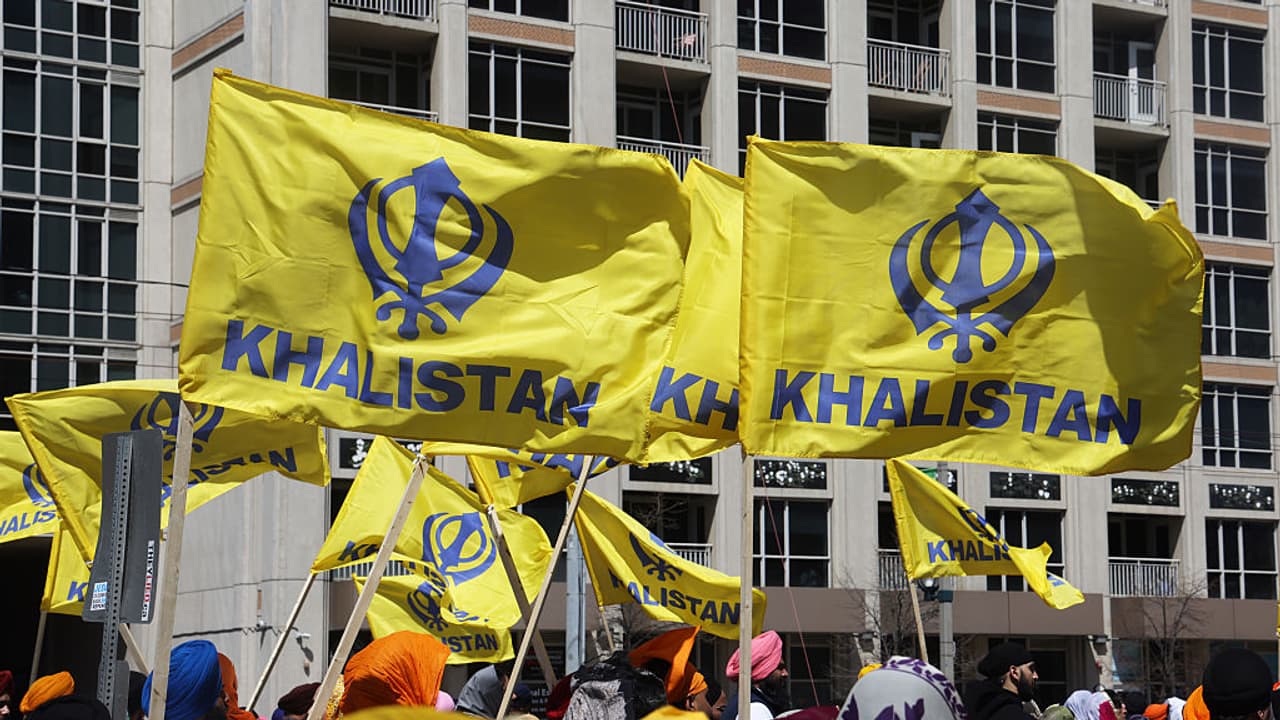Khalistani extremists in Canada protested Prime Minister Modi’s G7 invite by chanting pro-Khalistan and anti-Modi slogans. This comes amid improving India-Canada ties under new PM Mark Carney, who defended India’s role at the summit.
A video has surfaced on social media platform X showing Khalistani extremists protesting against the invitation extended to Indian Prime Minister Narendra Modi to attend the upcoming G7 Summit in Canada.

The demonstrators can be seen chanting “Khalistan zindabad” and raising anti-Modi slogans, opposing his participation in the high-level gathering of world leaders.
The protest appears to be a reaction to Canada’s recent outreach to India, especially after newly elected Prime Minister Mark Carney invited PM Modi to the G7 Summit scheduled to be held later this month in Kananaskis, Alberta.
Canada defends India’s presence at G7
Despite the protest by Khalistani elements, Canada’s new leadership has taken a clear stance in support of India’s participation at G7 summit. On Friday, Prime Minister Mark Carney defended his decision, saying it “made sense” to invite India to the summit.
“India is the fifth largest economy in the world, effectively the most populous, and central to global supply chains. It makes sense for India to be at the table for discussions on security, energy, and global cooperation,” Carney said.
He also noted that Canada and India had resumed law enforcement dialogue, calling it a sign of progress following months of diplomatic tension.
PM Modi confirms invitation, signals new chapter in ties
On June 6, Prime Minister Narendra Modi confirmed that he had received and accepted the invitation to attend the G7 Summit.
“Congratulated him (Carney) on his recent election victory and thanked him for the invitation… As vibrant democracies bound by deep people-to-people ties, India and Canada will work together with renewed vigour, guided by mutual respect and shared interests,” PM Modi said in a post on X.
His response marked a notable shift in tone from previous months, signalling efforts by both countries to reset their strained relationship.
From diplomatic freeze to dialogue
India-Canada relations had hit rock bottom under former Prime Minister Justin Trudeau. Tensions escalated after Trudeau accused Indian agents of involvement in the killing of Khalistani separatist Hardeep Singh Nijjar on Canadian soil, a claim India strongly denied.
The fallout led to the expulsion of diplomats, suspension of trade talks, and widespread public hostility. However, with the change in leadership, both countries appear to be moving cautiously towards re-engagement.
Khalistani protests persist abroad
While diplomatic efforts are underway, Khalistani groups abroad continue to pose a challenge. Their public demonstrations and online campaigns against India have drawn concern from Indian officials, who have repeatedly urged foreign governments to crack down on extremist elements operating under the guise of free speech.
The latest protest video is another reminder of the complexity of India-Canada ties, where government-level cooperation now has to balance against fringe voices that oppose the thaw.
G7 Summit: An opportunity for reset
The upcoming G7 Summit in Kananaskis will be a test of the renewed commitment between the two democracies. For India, it is an opportunity to reassert its global role and strengthen ties with key Western allies.
For Canada, especially under Carney’s leadership, it is a chance to repair relations with New Delhi while maintaining its domestic political balance.
Whether the summit helps smoothen rough edges or adds fresh tension remains to be seen but the message from both governments, at least for now, is clear: dialogue over distance.


